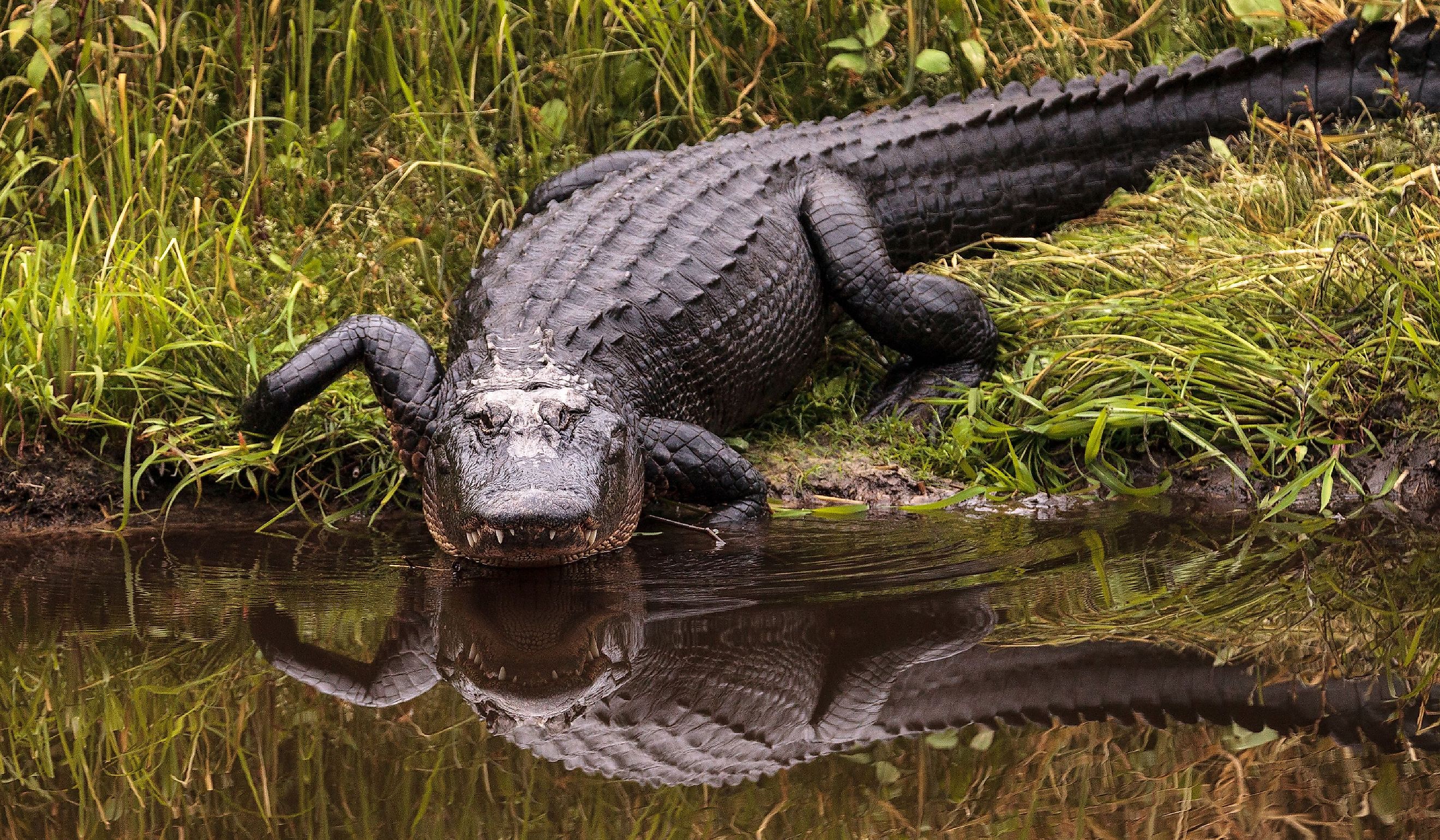
The 10 Deadliest Animals in North Carolina
Dotted with gorgeous beaches along its Atlantic Ocean coastline and buttressed by the breathtaking Appalachian Mountains throughout its western interior, the state of North Carolina is a premiere vacation destination for folks across the United States, Canada, and even outside of North America. However, like many popular tourist areas, once you venture beyond the large cities, shoreside communities, and resort towns, the wilderness of the Tar Heel State contains a host of wildlife that can be deadly to human beings. Due to their potential and propensity for attacking people, visitors to North Carolina ought to be aware of the following ten species in particular.
Copperhead Snake
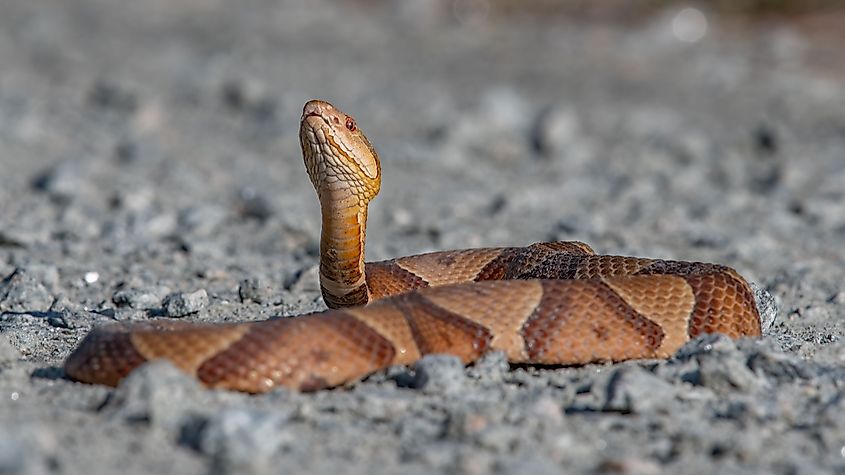
The Copperhead Snake, stretching between 20 and 37 inches, is a master of camouflage with its tan to pinkish-tan body adorned with hourglass-shaped bands. Despite being possessing venom that can kill humans, Copperheads often deliver so-called 'dry bites' that do not inject the victim with venom. Obviously, this cannot be counted upon, and great care should be taken when exploring known Copperhead habitats. These snakes are ambush hunters and are imbued with a heat-sensing organ that allows them to detect prey from far away—and they love to blend into the leaf litter!
Timber Rattlesnake
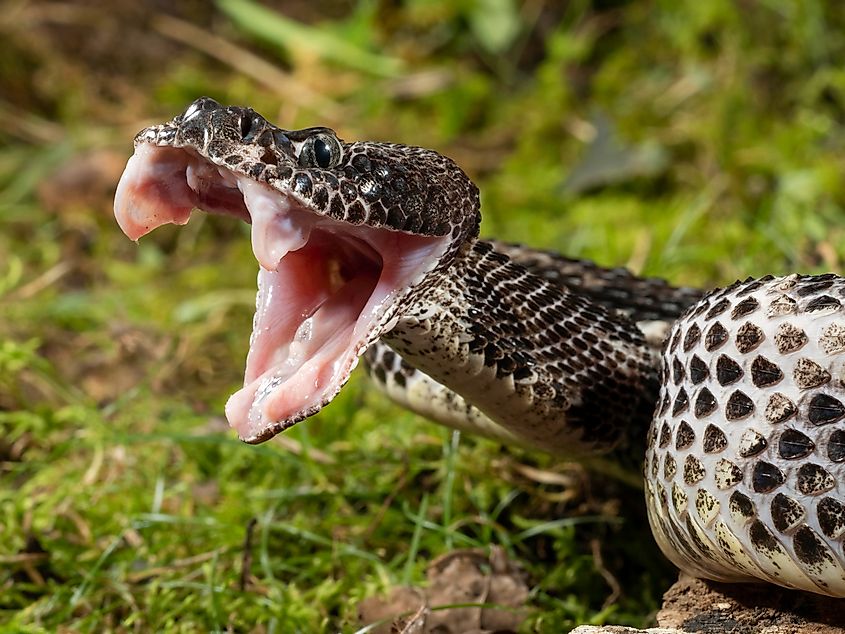
The Timber Rattlesnake, ranging from 30 to 60 inches, is one of North Carolina's most dangerous creatures due to its large size and potent venom. However, these snakes are surprisingly mellow, usually giving ample warning with their rattles before considering lashing out for a bite. They are often found in wooded areas and rocky hillsides, where they blend in seamlessly with the environment.
Fun fact: the Timber Rattlesnake was an 18th-century symbol of American independence, depicted prominently on the famous 'Don’t Tread on Me' flag during the American Revolution.
Cottonmouth (Water Moccasin)
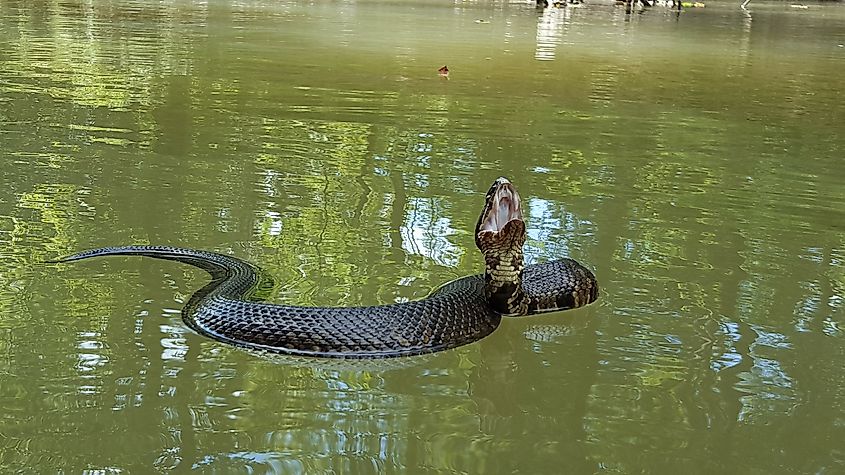
Cottonmouths, which grow 26 to 48 inches long, are the only aquatic venomous snakes native to North Carolina. Often found in or near the water, they get their name from the dramatic display of their white-lined mouths when threatened. While their bite can cause severe pain, tissue damage, and even death in some circumstances, these snakes usually prefer to slither away rather than confront. Cottonmouths are known to inhabit swamps, marshes, and the edges of lakes and rivers. Despite their fearsome reputation, they play a crucial role in controlling fish and amphibian populations, thus maintaining a balanced ecosystem.
Pygmy Rattlesnake
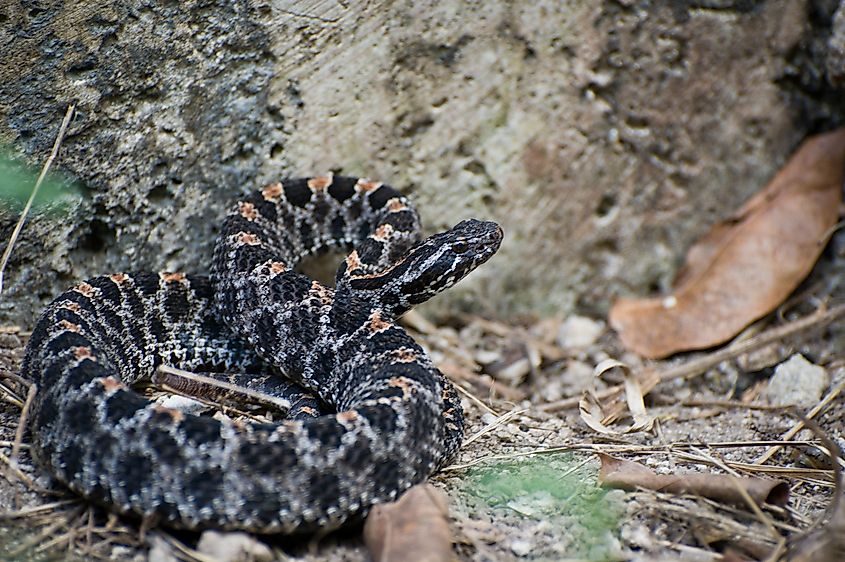
The Pygmy Rattlesnake, measuring just 12 to 18 inches, is the smallest venomous snake that calls Tar Heal State home. Pygmy rattlesnakes are usually found in pine flatwoods, scrublands, and along the edges of forests. Their diet primarily consists of small mammals, lizards, and insects. These little guys rely on their camouflage, rarely using their faint rattles. Though their bite isn’t typically fatal to healthy adults, the same cannot be said regarding children, the elderly, and the otherwise infirm—and no matter who you are, they can cause severe pain and injury. So keep an eye out for these tiny fellows while gardening or hiking!
Common Snapping Turtle
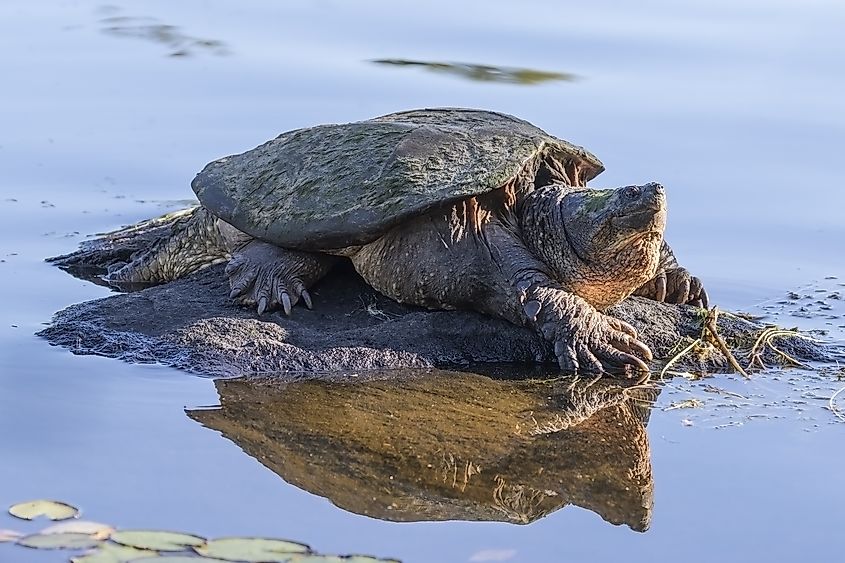
Weighing between 10 to 35 pounds and growing up to 18.5 inches, the Common Snapping Turtle is a literal heavyweight of North Carolina's lakes and rivers. Known for their powerful jaws, these turtles can inflict serious wounds if provoked, and depending on where they choose to bite, can be deadly. They might be slow on land, but don't be fooled—they’re much quicker underwater. Common snapping turtles are omnivorous and will eat a variety of plants and animals, including fish, frogs, and even birds. Their strong jaws and aggressive nature make them formidable hunters in their aquatic habitats.
American Alligator
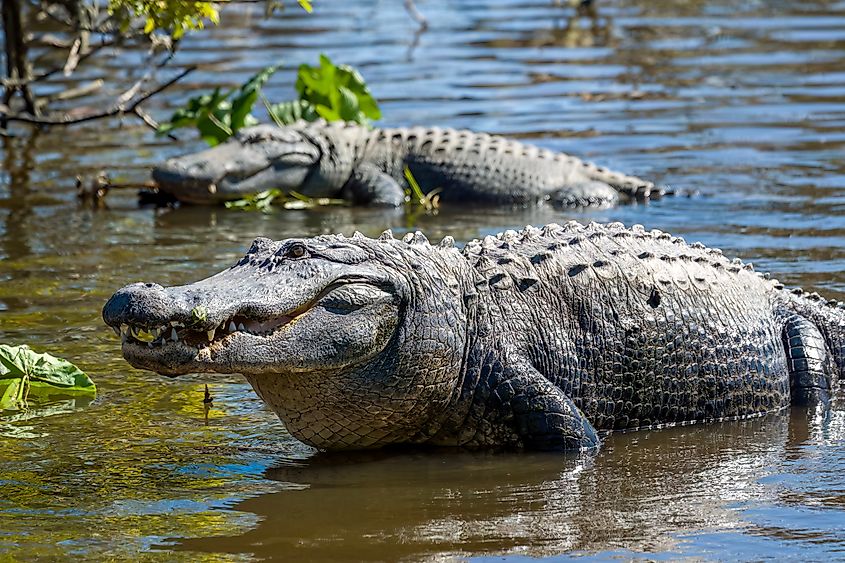
Stretching from 6 to 16.5 feet, the American Alligator is North Carolina's largest reptile. These giants, often found in swamps and freshwater lakes, use clever tricks like setting lures to catch prey. While they’re generally shy around human beings, it’s wise to steer clear if you spot one, as they can become aggressive if threatened, taunted, or baited in any way. American alligators have powerful tails and strong jaws capable of crushing bones. They play a vital role in their ecosystems by controlling the populations of prey species and creating "alligator holes" that provide habitats for other wildlife during dry periods.
Black Widow Spider
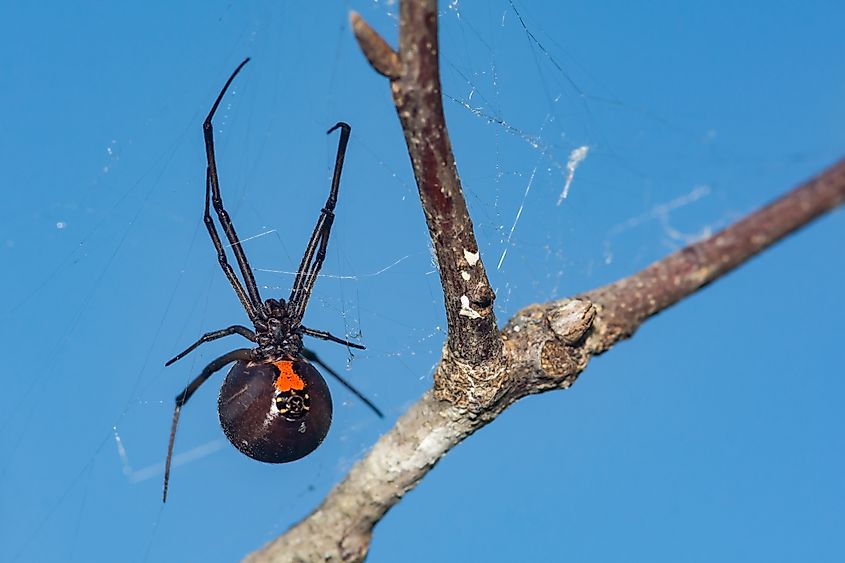
The Black Widow, with its notorious red hourglass mark, is the most venomous spider in North Carolina. They are commonly found in dark, undisturbed areas such as basements, garages, and woodpiles. They feed on insects and other small arthropods, using their strong silk webs to capture prey. Females, who are the dangerous ones, rarely bite humans unless disturbed. But if they do, their venom is 15 times stronger than a rattlesnake's, making them a true force to be reckoned with. Should you suffer a bite, an immediate trip to the hospital is required.
Brown Recluse Spider
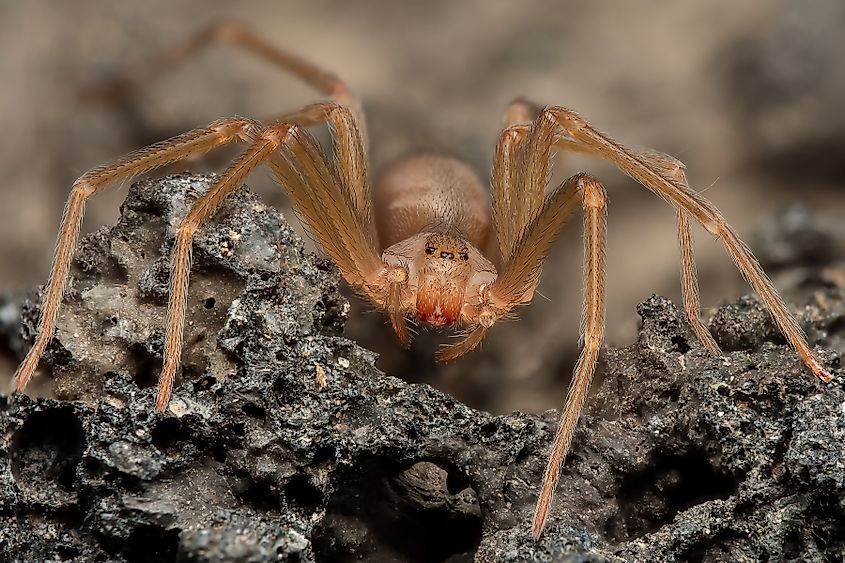
The Brown Recluse, or Violin Spider, is known for its reclusive behavior, often hiding in crevices and undisturbed areas. They are primarily nocturnal hunters, preying on insects and other small invertebrates. Their venom contains enzymes that can cause significant tissue damage and necrosis, meaning they are small but potent house guests that you don’t want to encounter. Their bites are painless at first but can lead to serious lesions and infections, which can turn fatal. These spiders love dark, cluttered places, so always be sure to check your shoes and bedsheets to avoid a nasty surprise.
Mosquitoes
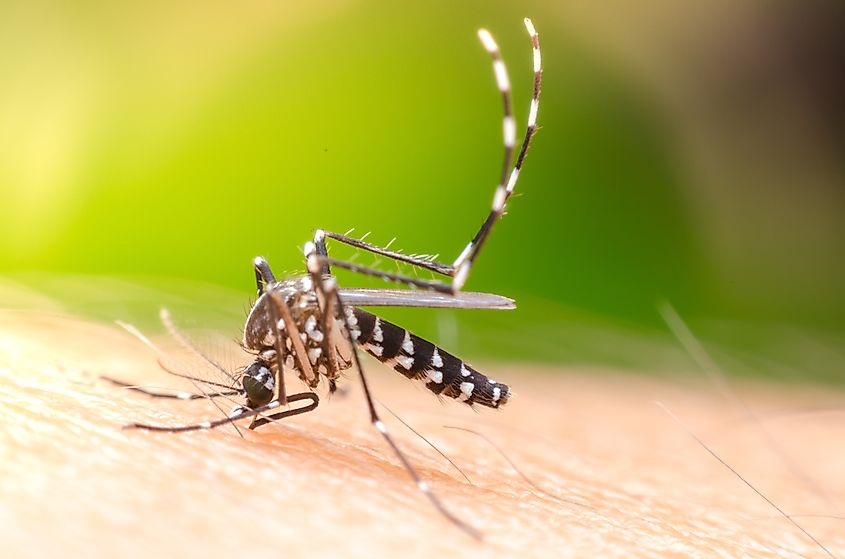
Despite their tiny size, mosquitoes are arguably the deadliest creatures in North Carolina due to the many potent diseases they spread. From West Nile Virus to Malaria to heartworm in pets, these annoying little bloodsuckers are a serious health hazard. Mosquitoes thrive in areas with standing water, where they lay their eggs. Some effective control measures people use to thwart them include eliminating breeding sites, using mosquito nets, and employing insecticides to reduce their populations. So, always remember to use insect repellent when hiking or camping in the woods to keep these pests at bay and lessen the chance of catching a nasty disease!
Ticks
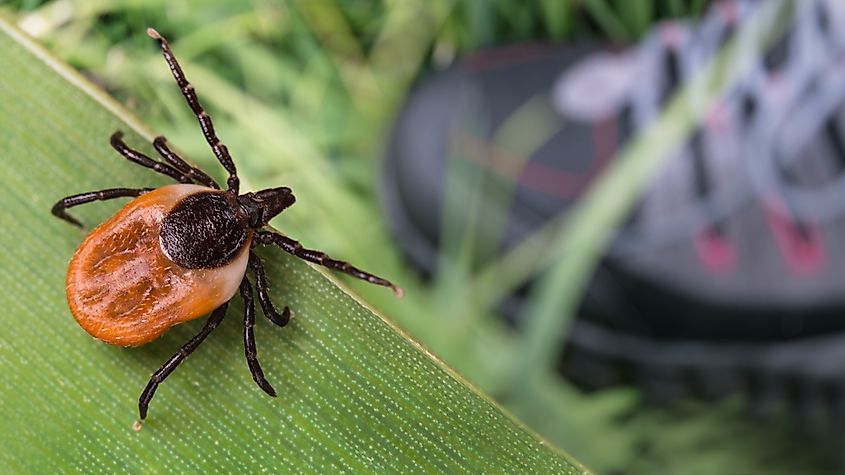
Ticks are tiny parasitic arachnids who love to feast on human blood and, in the process of doing so, can transmit diseases like Lyme disease and Rocky Mountain Spotted Fever. Ticks go through several life stages, from larvae to nymphs to adults, and require a blood meal at each stage to properly develop. Found in all manner of grassy and wooded areas, ticks latch onto any passing host without discrimination, including humans. Prompt removal and medical attention are crucial to prevent infections from their bites. Preventive measures include wearing long sleeves and pants, using tick repellents, and conducting thorough tick checks after outdoor activities.
Although all of these creatures can be deadly to human beings, visitors to North Carolina should take solace in the fact that medical treatments like anti-venoms exist to cure many of their ill effects. This is the case for Black Widows, ticks, and every one of the snakes on this list, but unfortunately, not for Brown Recluse Spiders. Because the bites of American Alligators and Common Snapping Turtles do not contain any biological toxins, there is no such countermeasure for them, so it's really best to just avoid contact with them altogether.
Regarding ticks and mosquitos, things become a bit more complicated. While the odds of receiving a serious or fatal disease from a mosquito are comparatively slim, they are not zero. So, if severe symptoms manifest after being bitten by a mosquito, medical attention should be sought. As for ticks, if you find one attached to your body, use tweezers to remove it carefully, clean the area with soap and water, and watch for signs of illness like fever or a rash for approximately a month afterward. If any of these signs appear, see a doctor immediately.
So, to all those planning a visit to the beautiful and welcoming state of North Carolina, enjoy the sights, sounds, and attractions, but exercise caution when venturing into its woodlands and backwater areas. There are critters and creepy crawlies living in the Tar Heel State that can be deadly!











